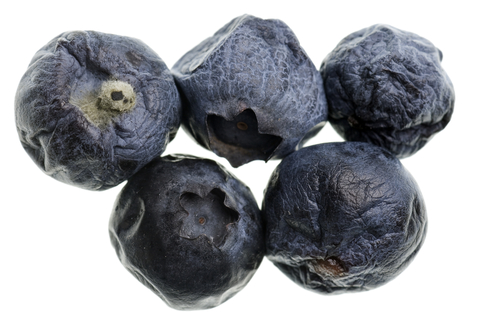… Bugs in Food? Would You Like Some Wood and Rodent Hair With That?
 Are you trying to lose weight? Go ahead and read this article… then print it out and post it somewhere you see a lot, as it’s nearly guaranteed to make you lose your appetite — fast.
Are you trying to lose weight? Go ahead and read this article… then print it out and post it somewhere you see a lot, as it’s nearly guaranteed to make you lose your appetite — fast.
While you probably assume that your peanut butter, popcorn or chocolate bar are just what they appear, there’s a good chance there’s a little something “extra” in there too… like an insect fragment or a rodent hair. And it’s all perfectly legal.
The U.S. Food and Drug Administration (FDA) acknowledges that keeping all “defects” — a euphemism they use for things like bug parts and rodent feces — out of food is not realistic. So, they allow food manufacturers some leeway with such contaminations, so long as it doesn’t reach the FDA-defined “action” level. The truth is, you might be able to monitor for bugs when you’re making a couple of batches of homemade jam, but when that jam is being produced on a massive scale, using fruit flown in from around the world (which was probably stored in a warehouse prior to), it’s humanly impossible to inspect each berry and cup of sugar for pests.
Of course, it’s not just bugs in food that we’re referring to here… food manufacturers also get away with adding a laundry list of non-food substances to your processed foods, and often disguise them on labels so you can’t equate them with what they really are (like wood, for instance)…
6 Nasties Lurking in Your Food
6. Rodent Hairs
 Do you find the idea of mice and rats crawling all over your pasta, cookies and crackers unsettling? Better get used to the idea, as rodent “filth,” as the FDA calls it, is allowed in your food. Macaroni and other noodle products must be contaminated with an average of 4.5 rodent hairs (or more) per 225 grams — for six or more samples — before the FDA considers it a problem. 225 grams is roughly four servings of pasta, which means that’s just about one rodent hair per serving… lovely!
Do you find the idea of mice and rats crawling all over your pasta, cookies and crackers unsettling? Better get used to the idea, as rodent “filth,” as the FDA calls it, is allowed in your food. Macaroni and other noodle products must be contaminated with an average of 4.5 rodent hairs (or more) per 225 grams — for six or more samples — before the FDA considers it a problem. 225 grams is roughly four servings of pasta, which means that’s just about one rodent hair per serving… lovely!
5. Mammalian Excreta (i.e. urine, feces and sweat… )
This too is allowed in your food, provided it’s at levels the FDA considers to be only “aesthetic” in significance. Do you use pepper to spice up your food? It can contain anything under an average of 1 mg of mammalian excreta per pound. How about sesame seeds? These can contain just under 5 mg of excreta per pound without sounding the FDA’s alarm bells.
4. Food Dye Made from Bugs
After a public outcry a few years ago, Starbucks pledged to phase out the use of a bug-based food coloring used in its Strawberries & Creme Frappuccino, among other products. The red dye is made from an extract from the cochineal, an insect, but Starbucks is far from the only taker. Cochineal extract, also known as carmine, is used in everything from jams and juices to baked goods, candy and cake icing.
3. Mold and Rot
 You wouldn’t pick the moldy peach out of the bunch, right? Well when you purchase produce that’s frozen or canned, detecting mold isn’t always so obvious. In fact, the FDA will only take action against frozen berries if the average mold count is 60 percent or more! That’s more than half of your bag of berries — moldy … and cherry jam can legally have mold counts of up to 29 percent! Cranberry sauce also has some leeway, with an action level for mold of 15 percent or more.
You wouldn’t pick the moldy peach out of the bunch, right? Well when you purchase produce that’s frozen or canned, detecting mold isn’t always so obvious. In fact, the FDA will only take action against frozen berries if the average mold count is 60 percent or more! That’s more than half of your bag of berries — moldy … and cherry jam can legally have mold counts of up to 29 percent! Cranberry sauce also has some leeway, with an action level for mold of 15 percent or more.
As for rot, which technically means “plant tissue that is visibly decomposed, usually discolored with disagreeable odors and tastes,” the action level is 7 percent or more for cherries, and 6 percent or more for potato chips.
2. Wood
Wood in your food? It’s, unfortunately, true. Have you ever seen “cellulose” on your food labels? This is another word for wood pulp… and it’s commonly used in crackers, ice cream, pancake syrup, vegetarian meat substitutes, pancakes, snack bars and more because it adds fiber (i.e. bulk) to foods and extends shelf life.
Cellulose is found naturally in apple skins, cabbage and other foods, and in this form acts as a healthy insoluble fiber. But the cellulose in most processed foods is actually made from tiny pieces of wood that have been processed and chemically treated to form a “pulp.” Basically, cellulose is an inexpensive filler product that food manufacturers use to cut the need for more expensive ingredients.
1. Bugs (Maggots, Anyone?)
Yes, bugs are allowed in your food, too. Quite an array of them, actually. This includes aphids, thrips, beetle eggs and/or sacs, larvae, mites, fly eggs, corn ear worms, corn borers… and maggots. For instance, canned mushrooms must contain an average of 20 or more maggots of any size per each 100 grams before the FDA will take action against them. One hundred grams is about 3.5 ounces of mushrooms and canning liquid, which could contain 19 maggots and be well within U.S. food safety guidelines…
 Hopefully reading this article and keeping it handy will help you curb your appetite (and if you share with your friends, it will curb theirs too!)… but if you want some not so yucky tips to finally lose stubborn weight, don’t miss the newly revised free report our team has been working on for over 6 months… “Secrets of Effective Weight Loss.”
Hopefully reading this article and keeping it handy will help you curb your appetite (and if you share with your friends, it will curb theirs too!)… but if you want some not so yucky tips to finally lose stubborn weight, don’t miss the newly revised free report our team has been working on for over 6 months… “Secrets of Effective Weight Loss.”
Click Here For Instant Free Download!
Source


People who eat kosher avoid all these bugs.
Yes, Kosher. Or you can just buy fresh. That’s what I do most of the time. It’s rather disgusting to think of people eating chocolate-covered bugs, but it’s even more disgusting to think of what we may be eating without even being aware of it. I remember when I was a kid I bought a Popsicle with a fly frozen in one end. It’s just a wonder we don’t have more health issues than we do.
Very informative interesting and insightful
I have heard so many different horrible things about all the filth in food, and that the USDA approves it all. This is so disgusting … It turns my stomach inside out.
It makes me sick to know how hungry these Vermonts are for a ” Dollar! ” What is it that some people won’t do…For a Dollar! The Food Industries are killing people every single second of the day, and the government approves of it. My question is: Are there any help for us as of today? What’s to eat at this day and time? We’re paying a very high price just so to make us sick and die. How Horrible Is This ?
What are our options. Other than growing our own. Which I do every year. That is why I have back pain
These stuff is not what will make us ill, actually insects are healthy proteins and eaten in many countries, what’s wrong with a bit of wood? The unhealthy is all the pesticides and chemicals that are allowed, although fly eggs and mice poop do gross me out!
Years ago I found rat hair in a can of vegetable soup I purchased needless to say it was the last.